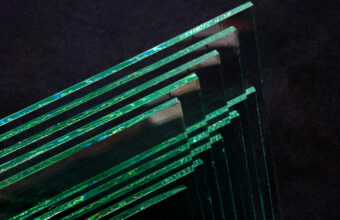Installing window film can dramatically improve the comfort, privacy, and energy efficiency of your space. The process isn’t without its pitfalls. Awareness of common installation problems can help you take proactive steps to avoid them or ensure you select the right professional for the job.
Here’s what you need to know about the potential challenges of window film installation and how to navigate them successfully…
1. Bubbles and Peeling
One of the most noticeable issues post-installation is the appearance of bubbles or the peeling of the film at the edges.
- Cause – Bubbles typically result from improper cleaning of the window before application or failure to remove all the air and water during installation. Peeling may occur if the film’s edges aren’t firmly adhered or if subpar adhesive is used.
- Prevention – Ensure the window is thoroughly cleaned and that the installer uses a squeegee to smooth out the film. Quality films with strong adhesives are less prone to peeling.
2. Incorrect Sizing and Cutting
Improperly measured and cut film can lead to gaps or excess material at the edges, compromising both aesthetics and functionality.
- Cause – Lack of precision in measuring the window or inaccuracies during the cutting process.
- Prevention – Precise measurements and the use of professional cutting tools are vital for a perfect fit. Choosing an experienced installer can also mitigate this risk.
3. Dust and Debris Under the Film
Small particles trapped between the film and the window can create unsightly bumps and inconsistencies.
- Cause – Dust or debris on the window surface or the film itself during installation.
- Prevention – The installation area should be as dust-free as possible, and the window surface should be meticulously cleaned before applying the film.
4. Legal Issues with Tinted Windows
Especially relevant for vehicles, installing window tint that is too dark can lead to legal problems due to varying regulations on tint opacity.
- Cause – Each state or country has specific laws dictating the allowable Visible Light Transmission (VLT%) of window tints.
- Prevention – Research local tint laws to ensure compliance. A professional installer should be aware of these regulations and offer films that meet legal standards.
5. Signal Interference
Metallic or metalized films can disrupt electronic signals, affecting devices such as GPS systems, mobile phones, and radios.
- Cause – The metal particles in certain types of window film can interfere with electronic signal transmission.
- Prevention – Opt for non-metallic films like ceramic, which offer excellent heat rejection and UV protection without affecting signals.
6. Aesthetic Mismatch
Choosing the wrong type or shade of film can result in a look that doesn’t match the aesthetic or architectural style of the building or vehicle.
- Cause – Lack of consideration for the overall design or color scheme.
- Prevention – Consult with a design expert or consider samples in different lighting conditions to ensure the selected film complements the existing aesthetics.
While installing window film can offer numerous benefits, attention to detail during the installation process is crucial to avoid common pitfalls such as bubbles, peeling, legal issues, and signal interference. Whether opting for a DIY approach or hiring a professional, being informed about these potential challenges can lead to more satisfactory outcomes and ensure that your window film adds both function and beauty to your space.





